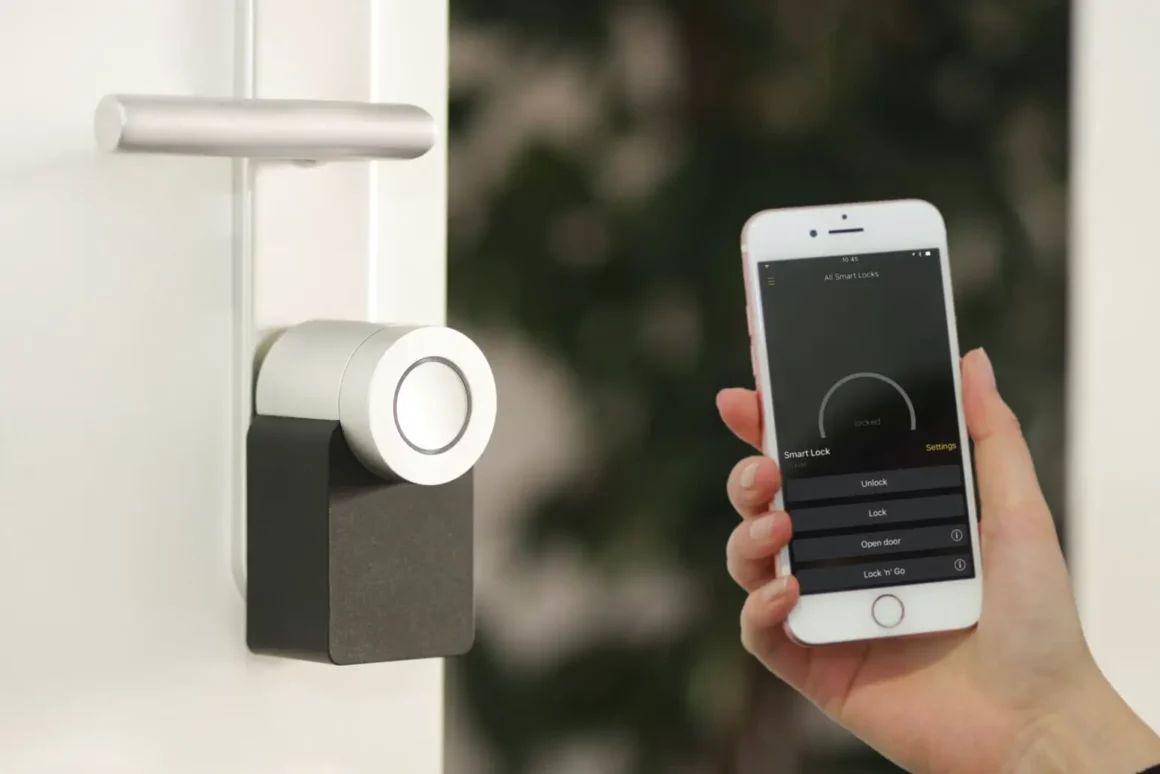Introduction
Welcome to the age of convenience, where smart home devices have become more than just a trend; they are a way of life for millions of households worldwide. From voice-activated assistants like Alexa and Google Assistant to smart thermostats, doorbells, and lighting systems, smart home devices offer unparalleled comfort and functionality. However, as we increasingly intertwine our lives with these gadgets, Smart Home Security becomes a pressing concern that can’t be overlooked.
Why is it so crucial to Secure Your Smart Home? The answer is simple. These connected devices are part of the Internet of Things (IoT), and like any other device connected to the internet, they are susceptible to hacking, unauthorized access, and data breaches. In essence, if one device is compromised, it can create a ripple effect, jeopardizing your Home Devices Security and personal privacy.
In this comprehensive guide, we will delve deep into how you can fortify the security of your smart home devices. You will learn:
- Why smart home security is of utmost importance
- Understanding your smart home ecosystem
- Best practices for securing various smart home devices
- Additional measures you can take to bolster your home network security
By the end of this article, you will be equipped with practical knowledge and actionable tips to ensure that convenience does not come at the cost of security.
Why Smart Home Security is Important
n the digital age, where interconnectedness is not just a convenience but almost a necessity, IoT Security becomes a cornerstone topic. Smart home devices, from your smart thermostat to your connected fridge, bring ease and automation into your daily routines. However, this comfort can sometimes come at a steep price—your security.
The Risks are Real
It might sound like a storyline pulled straight from a science fiction movie, but Smart Home Hacks are a growing concern. The risks can vary in complexity and impact:
- Unauthorized Access: Smart home devices are often controlled through smartphones. A breach in your smartphone’s security can lead to unauthorized users gaining control over your home devices.
- Data Theft: Devices like smart speakers are always listening. A hacker with access could potentially record private conversations or steal personal data.
- Physical Security: Imagine your smart door lock or garage door being manipulated by a hacker. The implications for personal safety are dire.
Cybersecurity is Crucial
Smart home devices are not always built with Cybersecurity as the primary focus. Manufacturers aim for user-friendliness and ease of installation, sometimes overlooking robust security features. This makes them susceptible to various types of cyber-attacks, including but not limited to:
- Phishing Attacks: Manipulating you into divulging your passwords.
- Network Eavesdropping: Hackers can “listen” to your device’s communication over the network to gather sensitive information.
- Device Manipulation: The firmware of your smart devices could be tampered with, altering their function and potentially turning them into spying tools.
Mitigating the Risks
Recognizing the risks should not deter you from enjoying the conveniences of smart home devices; rather, it should motivate you to take smart home security seriously. Simple steps can often go a long way in securing your smart home, and we will explore these in detail in the subsequent sections of this guide.
In summary, while the features and conveniences of smart home devices are undoubtedly appealing, they also present a set of security challenges that should not be ignored. By taking proactive steps to secure your smart home devices, you can enjoy the conveniences they offer while minimizing the associated risks.
Understanding Your Smart Home Ecosystem
Before diving into security measures, it’s vital to have a clear understanding of the smart home ecosystem you’ve set up—or plan to set up—in your residence. Recognizing the types of devices you have and how they interconnect can help you create a robust framework for Smart Home Safety.
Commonly Used Smart Home Devices
Here are some of the most commonly used smart home devices that you might have or consider installing:
- Smart Speakers: Devices like Amazon Echo and Google Nest act as the central hub for all your smart home controls. They can manage everything from playing music to locking your doors.
- Security Cameras: Smart cameras like Arlo or Ring offer not just recording but real-time surveillance that you can access from your smartphone.
- Smart Thermostats: Products like Nest Thermostat or Ecobee allow you to control the temperature of your home remotely, learning your habits to optimize energy use.
- Smart Door Locks: Companies like August and Schlage offer smart locks that allow you to secure your home without a physical key.
- Home Lighting: Philips Hue, LIFX, and similar companies provide smart lighting solutions that you can control through voice commands or apps.
- Appliances: Smart refrigerators, ovens, and even coffee makers are now available, adding a new level of convenience to your home.
Interconnectivity and Risks
These smart devices often work in synergy, providing a seamless experience that makes life more convenient. However, this interconnectivity can also be a vulnerability. If one device is compromised, it could potentially affect the others, posing a significant risk to your Smart Device Protection.
For instance, if your smart speaker is hacked, it could be used to control other connected devices maliciously. Therefore, it’s not just the security of individual devices that matters but the security of the entire smart home ecosystem.
Importance of a Holistic Approach
While it’s easy to focus on each gadget independently, an effective smart home security strategy should encompass all devices and the networks they operate on. Your approach should be as integrated as the ecosystem itself, involving layers of security measures to guard against different types of vulnerabilities.
In the upcoming sections, we will provide you with a detailed roadmap for safeguarding your smart home devices, each contributing to the overall safety and security of your smart home ecosystem.
Best Practices for Smart Home Device Security
Having a smart home doesn’t mean you have to compromise on security. There are several best practices you can follow to ensure that your connected devices and, by extension, your home is safe. Here we will discuss some of the crucial Security Measures you should implement to maintain Smart Home Safety.
Multi-factor Authentication
A single password is no longer considered sufficient to protect your online accounts, and the same logic applies to your smart home devices. Multi-factor authentication (MFA) provides an additional layer of security. This often involves not only inputting a password but also confirming your identity through a second device, like a mobile phone, or a biometric feature, like a fingerprint.
By enabling MFA, you make it significantly harder for unauthorized users to gain control of your devices. If your smart home gadgets offer this feature, it’s a no-brainer to activate it.
Regular Software Updates
Manufacturers regularly roll out software updates that not only provide new features but also fix security vulnerabilities. Make it a habit to regularly check for and install these updates for all your devices. Some devices allow you to automate this process, ensuring that you are always running the latest, and presumably, the safest version of the software.
Network Security
Securing the network your devices are connected to is crucial for Home Network Security. Make sure your Wi-Fi network is secured with WPA3 encryption, if possible, and a strong, unique password. Avoid using public or open networks to control your smart home devices. Firewalls and Virtual Private Networks (VPNs) can offer additional layers of protection.
Long-tail Keyword Section: Steps to Protect Your IoT Devices at Home
- Inventory Your Devices: Keep a list of all smart devices in your home. Knowing what you have is the first step in securing it.
- Use Strong Passwords: Always change default passwords and opt for complex combinations of letters, numbers, and symbols for your accounts.
- Separate Networks: Consider setting up a separate Wi-Fi network solely for your smart home devices, segregating them from your computers and smartphones.
- Device Settings: Dive into the settings of each device to optimize its security features. Turn off unnecessary features and permissions that can expose you to vulnerabilities.
- Monitor Regularly: Use network monitoring tools to keep an eye on the activity of your smart home devices. Unusual activities could indicate a security issue.
- Regular Audits: Conduct periodic security audits of your smart home ecosystem to identify and fix potential vulnerabilities.
By following these best practices and proactive steps, you can significantly bolster the security of your smart home devices and enjoy the conveniences they offer without unnecessary risks.
How to Secure Specific Types of Smart Home Devices
As we’ve discussed the general best practices for smart home device security, it’s now time to focus on specific types of devices you may have in your smart home ecosystem. Implementing device-specific security measures can further strengthen your overall smart home security.
Voice-Activated Devices
Voice-activated devices like Amazon Echo and Google Home have become the cornerstone of many smart homes. However, they are also susceptible to various security threats, including unauthorized voice commands and eavesdropping.
Security Measures for Voice-Activated Smart Home Devices:
- Voice Recognition: Some voice-activated devices offer voice recognition features. Activate this option to limit the control to recognized voices only.
- Microphone Control: Utilize the mute button when the device is not in use, especially during sensitive conversations, to prevent accidental recordings or eavesdropping.
- Review Voice Recordings: Periodically review and delete saved voice recordings that are stored in the cloud.
- Network Security: Always connect your voice-activated devices to a secure Wi-Fi network with strong encryption.
Smart Cameras
Smart cameras are fantastic for home security, but they can also become a security liability if not appropriately secured.
Smart Home Cybersecurity Tips for Cameras:
- Strong Passwords: Always change the default password, opting for a strong and unique combination.
- Enable Two-Factor Authentication: If available, enabling this feature adds an extra layer of security.
- Network Encryption: Use secure, encrypted networks to transmit the camera feed.
- Regular Software Updates: Keep your camera’s firmware up to date to patch any security vulnerabilities.
Smart Locks
Smart locks offer the convenience of keyless entry but can be susceptible to hacking.
Security Measures for Smart Locks:
- Biometric Verification: Where available, use fingerprint or other biometric verification methods.
- Geofencing: Set your smart lock to activate itself automatically when your smartphone leaves a certain radius.
- Guest Access: Be cautious when giving guest access; ensure it’s limited and temporary.
- Activity Logs: Regularly review the activity logs to spot any unauthorized access.
By implementing these targeted security measures, you’ll be going a long way in protecting each specific type of device in your smart home, thereby fortifying your entire smart home ecosystem.
Long-tail Keyword Section: How to Set Up a Secure Smart Home Network
An essential aspect of smart home security is setting up a robust and secure home network. A well-configured network acts as a formidable barrier against potential intruders. In this section, we will guide you through the process of setting up a separate network for your smart home devices and discuss the importance of a strong Wi-Fi password and network security.
Why Set Up a Separate Network?
Setting up a separate network exclusively for your smart home devices offers an additional layer of security. By isolating these devices from your primary network—where you have your computers, smartphones, and tablets—you limit the potential points of entry for hackers. Even if one of your smart home devices is compromised, the risk of the hacker gaining access to more critical devices is minimized.
Steps to Set Up a Secure Smart Home Network
- Access Your Router Settings: Open your web browser and enter your router’s IP address to access its settings. You will need the username and password, usually provided on the router itself or in the user manual.
- Create a Guest Network: Most modern routers offer the option to create a guest network. Enable this feature and rename it something different from your primary network to easily distinguish between the two.
- Enable WPA3 Encryption: If your router supports it, enable WPA3 encryption for improved security. If not, WPA2 is the next best option.
- Set a Strong Password: Create a strong, unique password for your guest network. Use a combination of uppercase and lowercase letters, numbers, and symbols for added security.
- Connect Smart Home Devices: Once the guest network is up and running, connect all your smart home devices to this network.
- Disable SSID Broadcast: For an added layer of security, you can disable the SSID broadcast of your guest network. This makes it invisible to others and requires manual entry of the network name to connect.
Importance of Strong Wi-Fi Password and Network Security
A strong Wi-Fi password is your first line of defense against unauthorized access to your network. Coupled with advanced network security protocols like WPA3, it creates a robust shield protecting all connected devices.
Network security doesn’t stop at the password; keeping your router’s firmware up to date, disabling remote management, and monitoring connected devices are all part of maintaining a secure environment.
By taking these steps, you ensure that your smart home network is fortified against the most common types of cyber threats, providing a safe and secure ecosystem for all your connected devices.
Additional Security Measures
Apart from implementing basic and device-specific security measures, there are other ways to fortify your smart home’s defenses. This section will discuss Do-It-Yourself (DIY) options, as well as third-party security services that can add an extra layer of protection to your smart home ecosystem.
DIY Smart Home Security Improvements
If you’re a hands-on individual who likes to take control, several DIY smart home security improvements can help you secure your connected home further. Here are some ideas:
- Firewall Setup: Advanced users can set up a dedicated firewall for their smart home network. This adds an additional layer of security to filter incoming and outgoing traffic.
- Device Auditing: Regularly audit all your smart home devices and disable any unnecessary features that could be exploited by hackers.
- Custom Scripts: Tech-savvy users can write custom scripts to monitor network traffic and send alerts for any suspicious activities.
- Open Source Solutions: There are various open-source security tools that you can implement to improve your home’s security. These solutions often have a community of developers who continually work on improving their effectiveness.
Third-Party Security Services
For those who prefer a hands-off approach or require a more professional setup, several third-party security services specialize in smart home security.
- Managed Security Services: Companies offer comprehensive smart home security packages that include regular audits, monitoring, and immediate incident responses.
- Antivirus for IoT: Believe it or not, antivirus solutions for IoT devices exist and can help protect your smart gadgets from malware and other vulnerabilities.
- Security Assessment: Some specialized services can carry out a complete security assessment of your smart home, providing you with a detailed report and recommended actions.
Importance of Securing Smart Home Gadgets
Regardless of the route you take—DIY, third-party services, or a combination of both—the importance of securing smart home gadgets cannot be overstated. As smart homes become increasingly interconnected, the potential for security risks multiplies. Implementing a multi-faceted security strategy safeguards not just individual gadgets but your home as a whole, giving you peace of mind.
Secure Your Smart Home Without Sacrificing Convenience
One of the main attractions of smart home devices is the unparalleled convenience they offer. Whether it’s voice-activated lights, automated thermostats, or remote-controlled locks, smart gadgets make life easier. But how do you reconcile the need for convenience with the imperative for robust security? Here we’ll discuss strategies to secure your smart home without giving up the comfort you’ve come to expect.
Customize Device Features
Many smart home devices come with a slew of features, some of which you may never use. Dive into your device settings to disable unnecessary functionalities that could potentially be exploited by attackers. For example, if you have a smart camera but never use its two-way communication feature, it’s wise to disable it. Customizing your devices allows you to retain the features that offer you convenience while shedding the superfluous ones that could pose risks.
Schedule Regular Updates
Forgetting to update your smart devices can expose you to vulnerabilities, but constant reminders to update can also become a nuisance. The solution? Schedule regular updates during times you’re less likely to be disrupted, like late at night or when you’re away from home. Many devices offer the option to automate updates, ensuring that you’re always running the most secure version without having to lift a finger.
Use Smart Home Profiles
Some smart home ecosystems allow the creation of profiles for different users, each with customized settings. Use this feature to limit the functionalities available to guest users or children. This allows you to maintain the convenience of allowing limited access without exposing your network to unnecessary risks.
Voice Recognition and Geofencing
Features like voice recognition in smart speakers and geofencing in smart locks can add both convenience and security. Voice recognition ensures that only authorized voices can control the devices, while geofencing can automatically lock or unlock doors when you leave or enter a predefined area.
Leverage Automation for Security
Many smart home platforms offer automation scripts that can improve both convenience and security. For example, you can set up an automation rule to turn on all lights and sound an alarm if a security camera detects movement during the night. This kind of automation gives you peace of mind without requiring constant manual monitoring.
By carefully selecting features, customizing settings, and leveraging automation, you can enjoy the convenience your smart home devices offer without compromising on security.
Regular Maintenance and Updates
Consistency is key when it comes to smart home security, and this involves more than just a one-time setup. Just like you regularly service your car or go for health check-ups, your smart home devices need ongoing attention to maintain a secure environment. In this section, we’ll discuss the critical nature of regular maintenance and updates.
Why Software Updates are Crucial
Software updates are not merely about adding new features; they often contain crucial security patches that fix vulnerabilities. Failing to update your devices can leave them exposed to potential hacks, malware, and other security risks. In the worst-case scenario, an outdated device could become an entry point for attackers to compromise your entire home network.
How to Update Security Settings on Smart Home Devices
Updating security settings varies from one device to another, but the process usually follows a similar pattern:
- Check for Updates: Go to the device settings via its dedicated app or web interface.
- Review Release Notes: Before updating, look at the release notes to understand what the update entails.
- Backup Settings: If possible, backup your current settings in case you need to revert to them later.
- Install Updates: Click on the ‘Update’ button, and wait for the process to complete.
- Restart Device: Some updates may require you to restart the device for the changes to take effect.
- Test Features: Once updated, test the device to make sure all functionalities are intact.
Wi-Fi Security and Updates
Wi-Fi security is often overlooked but is equally crucial. Make sure your router’s firmware is updated regularly to benefit from the latest security patches. Also, periodically change your Wi-Fi password and ensure that strong encryption like WPA3 is enabled.
Schedule Regular Checks
Given the constant flux of technology, it’s wise to schedule a regular maintenance routine:
- Calendar Reminders: Set reminders to check for updates every month.
- Automated Updates: Where possible, enable automated updates, but always review what each update involves.
- Device Audit: Quarterly, conduct an audit of all connected devices to ensure they are operating on the latest software and that no unnecessary features are enabled.
By consistently updating your smart home devices and Wi-Fi security settings, you are taking an essential step in fortifying your home against the ever-evolving landscape of cyber threats.
Frequently Asked Questions (FAQs) About Smart Home Security
Smart home security is a topic that involves various facets and technologies. Naturally, questions abound. Here we answer some of the most frequently asked questions to provide you with a more comprehensive understanding of smart home security.
What Makes Smart Home Devices Vulnerable?
Smart home devices are vulnerable due to outdated software, weak passwords, and unprotected network connections. The more interconnected your smart home ecosystem is, the higher the potential for security risks.
Is It Safe to Use Voice Commands for My Smart Home?
Voice commands can be convenient but pose risks if voice recognition is not enabled. Always use voice recognition features and limit the actions that voice-controlled devices can perform without verification.
How Can I Secure My Smart Home Network?
To secure your smart home network, use strong, unique passwords, enable WPA3 encryption, and consider setting up a separate network exclusively for your smart home devices.
Are Smart Home Security Systems Worth the Investment?
Smart home security systems can be a worthy investment depending on your needs. They offer centralized control and monitoring capabilities that standalone devices often lack. However, they are most effective when kept updated and configured properly.
How Often Should I Update My Devices?
You should update your devices as soon as new software patches are released. You can also set calendar reminders to check for updates manually if automated updates are not an option.
What Steps Can I Take Today to Improve My Smart Home Security?
To improve your smart home security immediately, change all default passwords, disable unnecessary features, and make sure all your devices are updated to the latest software version.
Can Third-Party Apps Access My Smart Home Data?
Third-party apps can access your smart home data if you grant them permission. Always read the privacy policy and understand the data access permissions before integrating any third-party app with your smart home ecosystem.
Is 2-Factor Authentication Necessary for Smart Home Devices?
Two-factor authentication (2FA) is not mandatory but highly recommended as it adds an extra layer of security by requiring a second form of verification in addition to your password.
Should I Be Concerned About Smart Home Hacks?
While the likelihood of your smart home being targeted may vary, the consequences can be severe. Therefore, it’s best to adopt a proactive approach to smart home security to mitigate risks.
By keeping these questions and answers in mind, you can navigate the complexities of smart home security with greater ease and assurance.
Conclusion
As our homes become increasingly interconnected with smart devices, the importance of robust Smart Home Security cannot be overstated. From voice-activated assistants to smart locks, these convenient gadgets offer us a new level of comfort and efficiency. However, they also open up a range of vulnerabilities that can compromise the safety of our living spaces if not properly managed.
In this blog post, we’ve discussed various methods to Secure Your Smart Home. Starting from understanding the different types of devices that make up your smart home ecosystem, to implementing best practices for Smart Home Safety, each step contributes to a more secure environment. We also covered the necessity of regular software updates and delved into additional security measures you can employ, such as DIY improvements and third-party security services.
Moreover, we touched upon How to Update Security Settings on Smart Home Devices and emphasized the importance of Wi-Fi Security. In the long-tail keyword section, we explored how you can secure your smart home without sacrificing the convenience these devices offer. And to round it all up, the FAQ section addressed some common questions and concerns regarding Home Devices Security.
Security is a continuous process, and it is crucial to stay updated with the latest advancements and risks in the smart home security landscape. By adopting a proactive approach and integrating the practices discussed, you can enjoy the benefits of a smart home while minimizing the associated risks.
Thank you for taking the time to read this comprehensive guide. We hope it serves as a valuable resource for securing your smart home effectively.









